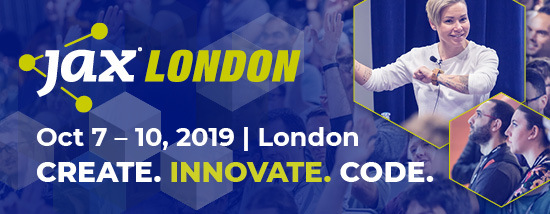You might have already noticed from our great coverage, but in case you didn’t: Jakarta EE 8 is officially here! That’s right, it’s been two years since anything happened with enterprise Java, so it’s fair to say that this is an important release for Java EE aficionados and their ilk.
What’s new in Jakarta EE 8?
On the surface there’s not a lot that screams new and exciting, but as Thilo Frotscher reminded us earlier this week, it’s what we can’t see that’s actually the most exciting part of this release:
“Jakarta EE 8 – as you can probably tell from the name – is functionally identical to Java EE 8, which was published two years ago. So, you might think that not much has happened in the meantime, but in fact the move of the Java EE platform to the Eclipse Foundation involved considerable effort; large amounts of code had to be migrated to a new build infrastructure…about 5.5 million lines of code and over 2.2 million comment lines in more than 61,000 files. This would be comparable with the backend of World of Warcraft and Linux kernel 2.6.0. It is therefore not a success to be underestimated.” –Thilo Frotscher
Not forgetting all of the legal negotiations involved in handing off a trademark and usage rights, or the fact a new specification process had to be created. Now instead of the JCP, we have the EFSP (Eclipse Foundation Specification Process).There is still one thorny issue remaining, however; that of the javax namespace. This was the subject of a lot of discussions throughout the course of Jakarta EE 8’s development.
The above-mentioned legal negotiations involved agreeing that the javax namespace cannot be used (this is also why Java EE 8 became Jakarta EE 8), so at some point everything javax should become jakarta. This is not something that was completely resolved with this release, as there was simply too many other things to be focusing on. As Arjan Tijms said in his blog post:
Other options being considered are a so-called big bang rename (rename everything in one go), or rename incrementally (rename the entire API only when anything in that API needs to be updated). A decision still has to be made, but from various polls, opinion pieces and discussions, it seems the following is the preferred combination of options:
- Big bang (rename all APIs in one go)
- javax.* to jakarta.* only (not touching any other part of the package name)
- Jakarta EE 9 only about rename (no other new features, which would be the topic of EE 10 then)
SEE ALSO: Jakarta EE 8 is sprinting towards an exciting future for enterprise Java
Specifications and compatibility
Jakarta EE 8’s specs are a bit sparse right now; Arjan Tijms explained that the time pressure and focus on other matters meant that a lot of the spec documentation landed on the “later” pile. As such, right now the specs are somewhat “boilerplate”, with the real ones to follow. You can see what’s there for yourself on the Jakarta EE 8 specifications page.
Right now there are three full platform compatible products for Jakarta EE 8: Eclipse Glassfish, Open Liberty and WildFly. Eclipse Glassfish and Open Liberty are also listed under web profile compatible products. To see the list for yourself and download one of these, check out the Jakarta EE 8 compatibility page.
What comes next?
So since the next Jakarta EE release, Jakarta EE 9, will most likely focus on resolving the namespace issue, that means we should expect the first real movement and innovation will start to happen with Jakarta EE 10. As for what those innovations might be, we might have already had a glimpse thanks to the ongoing conversation around the role of Eclipse MicroProfile in relation to Jakarta EE.
SEE ALSO: Jakarta EE & Eclipse MicroProfile – two names, one family?
Java Champion Sebastian Daschner was the one to open up this conversation in an open forum, and since we’ve been following Jakarta EE’s development so closely we also asked him some questions about his thoughts on the future relationship between the two.
At the time, the discussion took a back seat so that they could get Jakarta EE 8 out of the door on time, but now that milestone is in the rear-view mirror, perhaps we will see more concrete discussions about how to get the pace of Eclipse MicroProfile working for Jakarta EE in a way that keeps them both not just cutting edge, but pushing the envelope.
But let’s not forget the huge achievement that is Jakarta EE 8. Why not go take a look round the release website? There’s even an eBook for you (e)bookworms out there!
The post Jakarta EE 8 – a new age of enterprise Java is upon us appeared first on JAXenter.
Source : JAXenter














